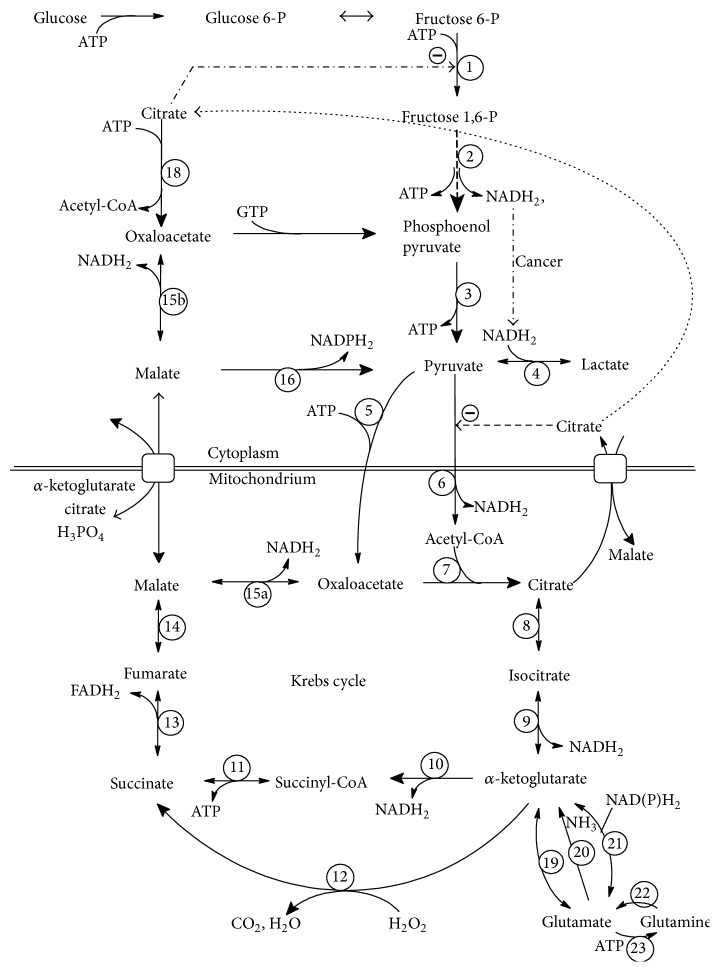Figure 2.
General scheme of glutamine (GLN) utilization in main metabolic pathways with details concerning ATP, NADH2, and NADPH2 production/utilization. PDHC6 catalyzing the reaction pyruvate→Acetyl-CoA is the only reaction that is able to reduce the total number of TCA molecules in the cell; thus, every GLN degradation pathway goes to pyruvate. Two pathways can be defined (see also Figure 3): (1) glutaminolysis (GLL): GLN→αKT→SC→malate→(to cytoplasm)→pyruvate and (2) reverse-TCA (R-TCA): GLN→citrate→(to cytoplasm)→oxaloacetate→malate→pyruvate. The balance of GLL pathway is +1 FADH2, +1 NADPH2, and +1 ATP (alternatively 0 ATP in the case of reaction 12). The balance of R-TCA pathway is −2 NADH2, −1 ATP, and +1 NADPH2. The alternative NAD(P)H2 from the reaction 21 is omitted. The conversion of Acetyl-CoA to malonyl-CoA in the fatty acid synthesis utilizes 1 additional ATP. Only one ATP molecule can be created directly during degradation of GLN in the GLL pathway (reaction 11). R-TCA utilizes rather ATP (for enzyme names, see enzyme abbreviation list).

